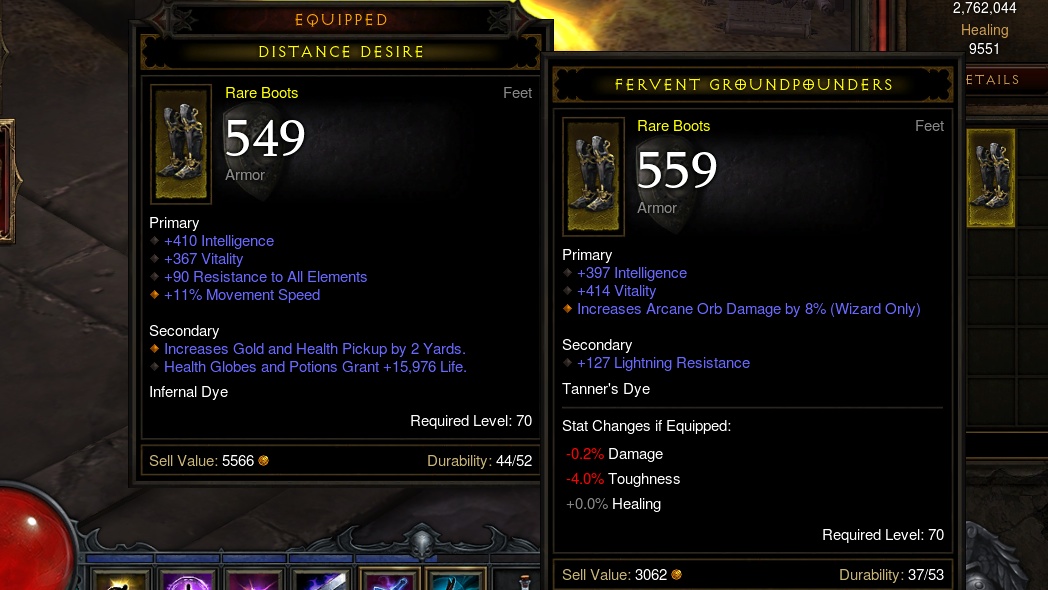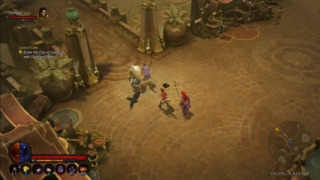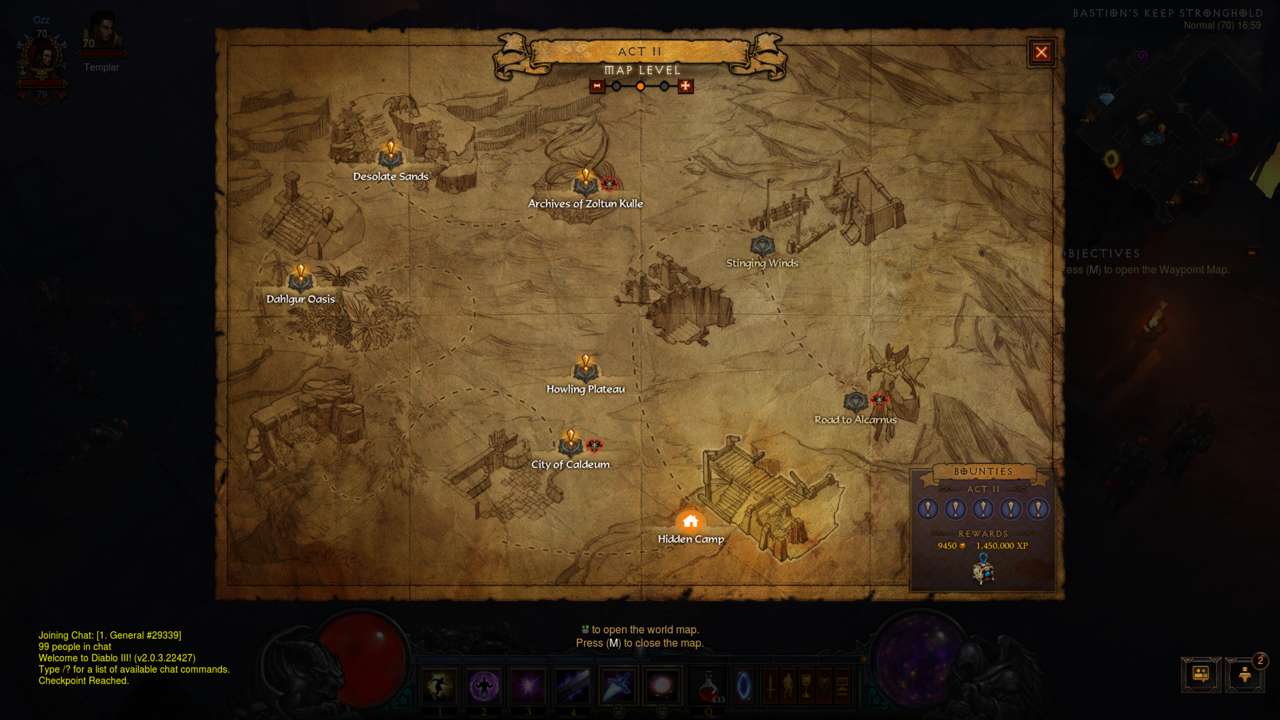Reaper of Souls has revitalised the Diablo III community, and that's great. I'm having a real blast playing it right now, and many of the people I encounter on Battle.net every night are, too. While there are plenty of hardcore fans who know exactly what items they're going to be grinding for over the next week, month, or year, if you're new to Diablo III, then you might just be a little lost after you're done squaring up to Malthael's army in Act V. With the game now out for a few weeks, it's likely that you may have just reached level 70, vanquished the final boss a couple of times, and are now wondering what's left for you to do.
Welcome to the item grind!
After clearing the story, you're entered into the Diablo III endgame. Welcome! You'll now spend much of your time replaying old chapters and exploring old areas, and it's here that Reaper of Souls makes some of its more dramatic changes from the original version of Diablo III.
The gist is this: Replay areas over and over again, and make sure you open every chest, engage the glowing elite enemies, and take on bosses. If you're lucky, you'll get some legendary (orange) items--you should get one or two legendary drops every hour, roughly--that bestow a big increase in your power and ability. Now that you've hit the maximum level, you're looking to get stronger by getting better equipment and earning paragon levels. The bad news is that it's a lot more random than the linear progression of levelling, but the good news is that it's a lot of fun, and you're going to get a lot stronger if you stick to it.
When I started playing Diablo II years and years ago, discovering that the endgame--the thing all my friends were playing on Battle.net every night, over and over--was essentially grinding for a hopeful jackpot payout left me initially confused and lost. I was used to having more structure in games: go here, achieve this, slay that. You might feel the same way with Diablo III. But once you've got a few good loot drops, and have felt the allure of clearing the game on torment difficulties, you'll start to naturally think, "Oh, if I can just get one of these to drop, or get a few more Paragon levels, or enchant a new status effect," and then you'll realise you're hooked.
Another Crab's Treasure Is A Soulslike 3D Platformer | GameSpot Review Stellar Blade Review Super Monkey Ball Banana Rumble - Official Multiplayer Features Trailer Nintendo 64 – April 2024 Game Updates – Nintendo Switch Online PUBG | Erangel Classic Returns Gori: Cuddly Carnage | Meow Launch Date Announcement Trailer Genshin Impact - "Arlecchino: Afterglow of Calamity" | Collected Miscellany Marvel Rivals - Official Loki Character Reveal Trailer | The King of Yggsgard Fortnite Festival - Official Billie Eilish Cinematic Season 3 Trailer Remnant 2 - The Forgotten Kingdom | DLC Launch Trailer Stellar Blade - Official "The Journey: Part 2" Behind The Scenes Trailer | PS5 Games Dead by Daylight | Tome 19: Splendor | Reveal Trailer
Please enter your date of birth to view this video
By clicking 'enter', you agree to GameSpot's
Terms of Use and Privacy Policy
Know your difficulties
Reaper of Souls (and the 2.0.1 patch that was rolled back into regular Diablo III) made some major changes to how the game handled enemies and levelling. Enemies levelled up as you did, and the game introduced nine new difficulty settings--normal, hard, expert, master, and torment, which has six tiers of difficulty. Here's the rub: even if you were blitzing through torment at level 60 in regular Diablo III, you're almost certainly going to find torment at level 70 too difficult until you find some new and better items.
Playing through the game on normal, finding better loot, and then becoming powerful enough to take on the higher difficulty settings is a natural attraction. Personally, I consider it my main goal. Torment is when things start to get more interesting, with the game throwing you its most powerful enemies but also making you more eligible for the most lucrative, newest, and most powerful items. It's a lot of work, but you'll get there in the end.
Don't rely on the game's stats
Reaper of Souls divides your item properties into three main areas: damage, toughness, and healing. You're almost certainly swayed predominantly by the damage--who isn't?--and that's fine when you're blasting through the campaign for the first time. But more damage doesn't always work out for the best, since Reaper of Souls introduces many items that give bonuses to both overall elemental damage and particular skills.

For instance, at first glance, these bracers, if equipped, would do 0.2 percent less damage, so you'd probably send them straight to the salvage pile. But if these boots are being equipped on a wizard who uses, say, arcane orb with the frozen rune as his main attack, then the orb damage would skyrocket from around 1.97 million to 2.13 million--a massive boost from an item that initially looks slightly inferior. If those were to be coupled with an item--or multiple items--that offered up boosts to ice attacks, that orb would be doing way, way more damage than the game might seem to indicate.
The thing to be aware of is the pointy diamond in the list. If that's there, then that particular effect isn't factored into the game's calculations for damage, toughness, or healing.
Mix things up

One of the best things about Diablo III is that you're never forced to play your character a single way; skills and runes can be swapped and switched at a moment's notice. When you've been playing with one build for a few days, swap to something else.
Playing like this is not only more varied and fun, but also means you're more likely to enjoy your loot drops. A friend of mine was recently salvaging anything that didn't fit exactly with her current build, and ended up throwing away all sorts of valuable items that could have been combined into a wide array of valuable secondary builds. A waste.
The stash has four big tabs for a reason, so don't be afraid to store clumps of stuff for another time. You might be playing as a physical damage dealer now, but you never know when four different pieces of armour with a boost to fire damage will come in handy. Plan for alternate builds, and experiment! Maybe you'll be an ice-wielding wizard tonight, but tomorrow you could be a fiery demon hunter or physical barbarian.
Another thing: don't always think you've got to stick to the same difficulty or mode all the time. I love running around in torment for the challenge, but sometimes I enjoy the satisfaction of ploughing through hundreds and hundreds of enemies on normal to relax and farm bounties. Do lots of things, and you're less likely to find yourself burning out on the game after a few weeks, and far more likely to be enjoying it for months to come.
Head into Adventure mode
Adventure mode, new with Reaper of Souls, is fantastic. You'll need to finish Act V once to get at it, and it's split into two main objectives: bounties and nephalem rifts. The former is where you'll start when you begin playing the mode; it has you trek across the acts and locations of the main campaign looking to accomplish various tasks. Each act features five bounties, and when you accomplish all five, you'll get a horadric cache, which will contain a random assortment of gems, shards, crafting materials, and weapons and armour. You might even get a rare cache-exclusive legendary item.
When playing online, many people right now like to obtain bounties on normal difficulty and split up, with each player taking on one act each, to clear the map out and farm up those caches more quickly.
Another thing you'll come across in Adventure mode is rift keystone fragments, and when you've picked up five of those, you can open a nephalem rift back at the obelisk located in each act's town. These are randomly generated dungeons that are designed to take 15 to 20 minutes to complete, although you'll likely plough through them a lot more quickly on the lower difficulties once you start getting more powerful. Last week Blizzard also buffed the nephalem rifts to have a 25 percent increased chance of dropping legendary items, which is multiplicative with any bonuses from your difficulty settings, so right now, for instance, torment I will confer a 43 percent increased chance of legendary drops.

Consider a trip to Whimsyshire and craft a level 70 hellfire ring
Diablo III featured two main quests to find when you'd reached the end of the game: Whimsyshire and the ongoing toil of forging a hellfire ring. These have effectively been superseded by Adventure mode, but it's worth keeping them in mind if you're the kind of person who wants everything.
Whimsyshire is Diablo III's secret level, where instead of fighting demons and monsters, you're pitted against unicorns, cuddly bears, and flowers in an environment with rainbows and happy bouncing clouds with smiley faces. How to get there? First you'll need the blacksmith plans to craft the staff of herding, which drops from Izual in Act IV. Then you'll need to collect five rare items: the black mushroom from the cathedral and Leoric's shinbone from Leoric's Manor in Act I; Wirt's bell from town vendor Squirt and liquid rainbow from the mysterious cave in the Dalghur Oasis in Act 2; and, finally, the random gibbering gemstone drop from rare monster Chiltara in the Caverns of Frost in Act III.
Once you collect all that (it'll take some time and multiple attempts, especially finding the gibbering gemstone), you can forge the staff of herding from Haedrig and then head to the now-glowing crevasse on Old Tristram Road in Act I.
A hellfire ring is also seriously hard work. You need to farm four powerful keywarden enemies, over and over and over, with one in each act: Odeg in Act I's Fields of Misery drops the key of bones; Sokahr in Act 2's Dalghur Oasis drops the key of gluttony; Xah'Rith in Act III's Stonefort drops the key of war; and Nakarat in Act IV's Silver Spire drops the key of evil. Each of the keywardens can also drop the plans for the four infernal machines, which can be given to the jeweler for crafting.
The catch? You have to be in at least torment I to be eligible for key drops. On torment I, there is about a 25 percent chance of a key dropping. On Torment VI, there is about a 50 percent chance. It's going to take you ages.
These four keys can be used to build one of four machines, which can be used to enter the four challenging boss fights, with each boss having a slight, unknown chance to drop an item that can be used to craft the hellfire ring. If the boss doesn't drop the item, you'll need to farm the keywardens again until you can build another portal to give it another go. Like I said, it's seriously hard work. Oh, and you need to buy the plans from Squirt in Act 2 for 5 million gold.
If you manage to go through all of that, you'll end up with a level 70 hellfire ring, which has no level requirement, has five random magical properties, can cast a ring of fire that causes 200 percent weapon damage, and grants 45 percent bonus experience. It doesn't really end up being worth it, but it sure is satisfying to finish the job. And the experience bonus is incredibly useful for levelling up alternate characters.
If you're a hardcore Reaper of Souls player, are there any other tips and tricks you'd give to those who are just starting out at the endgame content? And what incredible items and builds have you found that will inspire the rest of us to keep questing onwards and upwards?

